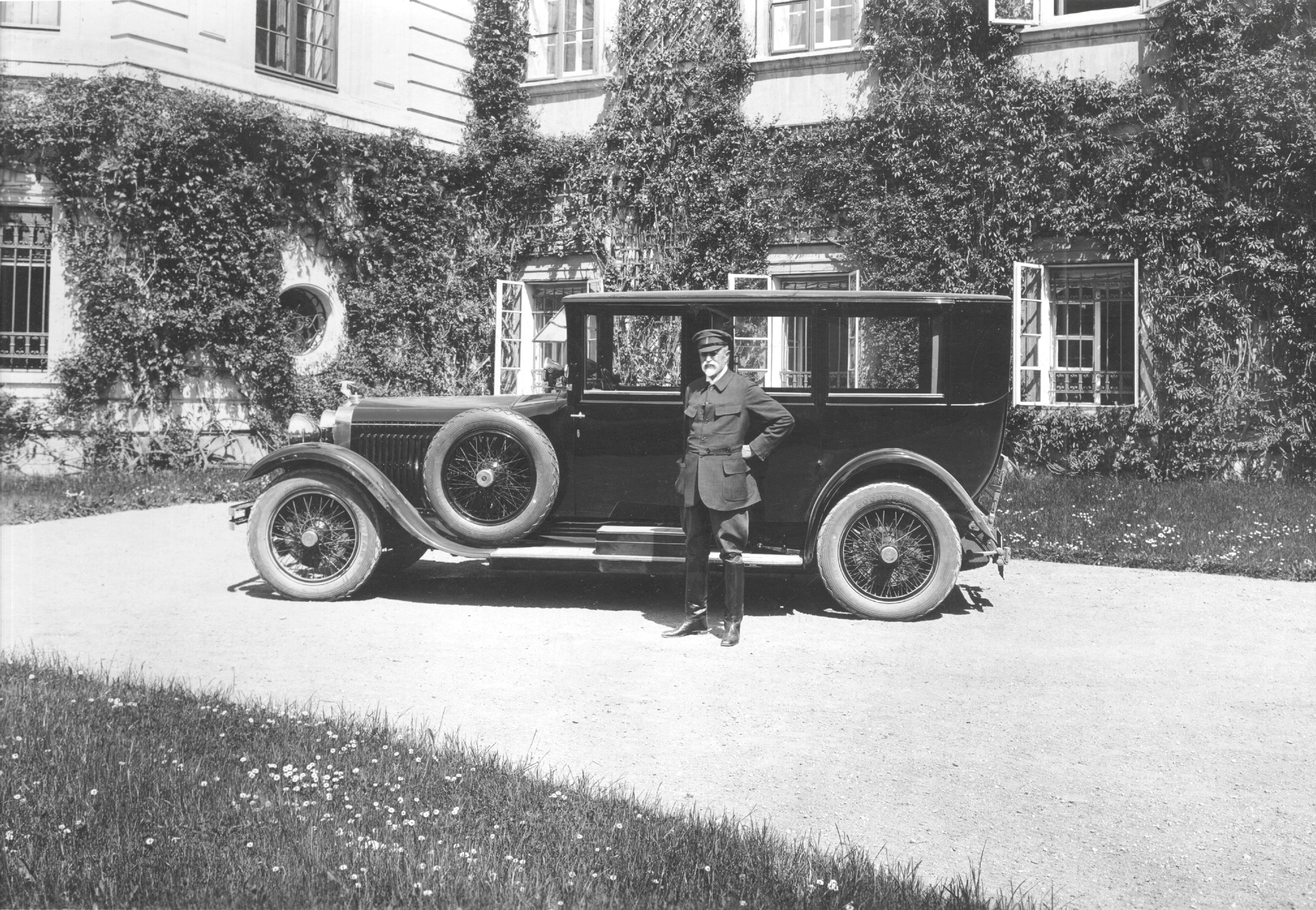ŠKODA vehicles have served Czech presidents for 90 years

› 90 years ago, Tomáš Garrigue Masaryk, the first President of Czechoslovakia, received a ŠKODA Hispano-Suiza as a state limousine
› Features of the ŠKODA Hispano-Suiza: Powerful OHC engine, top speed of 140 km/h
› Sitting Czech President Miloš Zeman was the first person to use the current third-generation ŠKODA Superb
Mladá Boleslav, 11 May 2016 – Exactly 90 years ago, a ŠKODA Hispano-Suiza became the official car of the first President of Czechoslovakia, Tomáš Garrigue Masaryk. Ever since, various ŠKODA models have served as official cars of several Czechoslovakian and Czech heads of state and government. Miloš Zeman, the sitting President of the Czech Republic, has confidence in the third generation of the ŠKODA Superb.
"High quality and prestigious ŠKODA vehicles, each one the brand’s top-of-the-range model of its time, were frequently the first choice as state car of the Czechoslovakian or Czech heads of state," said Andrea Frydlová, Director of the ŠKODA Museum. "Tomáš Garrigue Masaryk, who became the first President of Czechoslovakia in 1918, was also the first person to use a ŠKODA Hispano-Suiza. Today, ŠKODA continues this tradition with the current third-generation ŠKODA Superb, which our President Miloš Zeman uses to travel to his appointments. Unfortunately, the original vehicle used by ‘TGM’ – as Masaryk is known here – could not be preserved. In the ŠKODA Museum’s restoration workshops, however, a similar ŠKODA Hispano-Suiza is currently being meticulously restored."
The first ŠKODA state limousine was developed during an important time of change for the car manufacturer: in 1925, the Lauren & Klement company from Mladá Boleslav merged with a strong partner, the ŠKODA engineering company, based in Pilsen. In Western Bohemia, the ŠKODA plants manufactured an exclusive small production run under licence of the prestigious French brand Hispano-Suiza. 100 of the most technically sophisticated and fastest cars of the 1920s were thereby built in Pilsen: the ŠKODA Hispano-Suiza.
At the beginning of May 1926, the first vehicle was sold to the office of Tomáš Garrigue Masaryk (1850-1937) for 280,000 korunas. The corresponding order was placed on 25 July 1925, and included several requests that the head of state made himself. After the bespoke body design had been approved – a limousine with a glass partition wall between the driver and the passenger compartment in the rear – the Parisian specialist company, Carrosserie Kellner Frères, manufactured the elegant shell. The original ‘N-1’ number plate was replaced with ‘P-118’ in the 1930s; the ‘P’ stood for Prague. After the then 85-year-old President resigned his post in December 1935, the ŠKODA Hispano-Suiza sat in the garage of his official residence, Prague Castle, until 17 March 1936.
Subsequently, the car was returned to the manufacturer – its fate thereafter is not known.
The ŠKODA Hispano-Suiza featured advanced technology which further emphasised the luxurious character of the model range. A 7-bearing crankshaft contributed to the extraordinarily smooth operation of the 6,654 cc six-cylinder engine. It was manufactured from a 350-kg engine block and weighed a substantial 45 kg after the complex build. The mechanically unique brake booster of the limousine, which can weigh up to 2.7 tonnes, used the vehicle’s kinetic energy and progressively supported the drum brakes: the effect was greater with increasing pedal force; braking efficiency was easier to modulate.
Following the end of the Second World War and a time of profound social change, ŠKODA once again supplied a vehicle to the president of Czechoslovakia. The armoured ŠKODA VOS (‘Vládní osobní speciál’; in English: special car for the government) was a prestigious notchback saloon with an opulent chrome trim at the front. A longer version, with armour and 52-mm-thick bulletproof windows, the ŠKODA VOS weighed up to 4,440 kg and had impressive dimensions: 5.70 metres long, 1.95 metres high and 1.75 metres wide. Between 1950 and 1952, around 100 vehicles from this model range were manufactured in different versions. Two Czechoslovakian presidents, Klement Gottwald (1896-1953) and Antonín Zápotocký (1884-1957), drove in one such limousine.
In the following decades up to the fall of the Iron Curtain in 1989, it was predominately models of the Soviet ZIS and ZIL brands that served as state cars at Prague Castle. Four years later, after the formation of an independent Czech Republic, ŠKODA returned to ‘state service’. Václav Havel (1936-2011), a human rights activist and later president, was a big car enthusiast. He insisted on personally testing numerous new ŠKODA models, including the Felicia and the first generations of the Fabia, Octavia and Superb. Václav Klaus, his successor in office, used the limousines of the Superb I and Superb II model ranges during two terms in office (2003-2013).
Miloš Zeman, the current President of the Czech Republic, received his new state car, a third-generation ŠKODA Superb, at Prague Castle on 5 June 2015. The limousine – in pearl-effect Black Magic and with the top-of-the-range Laurin & Klement trim level – is fitted with a turbocharged 2.0 TSI/206 kW petrol engine and DSG automatic transmission.

